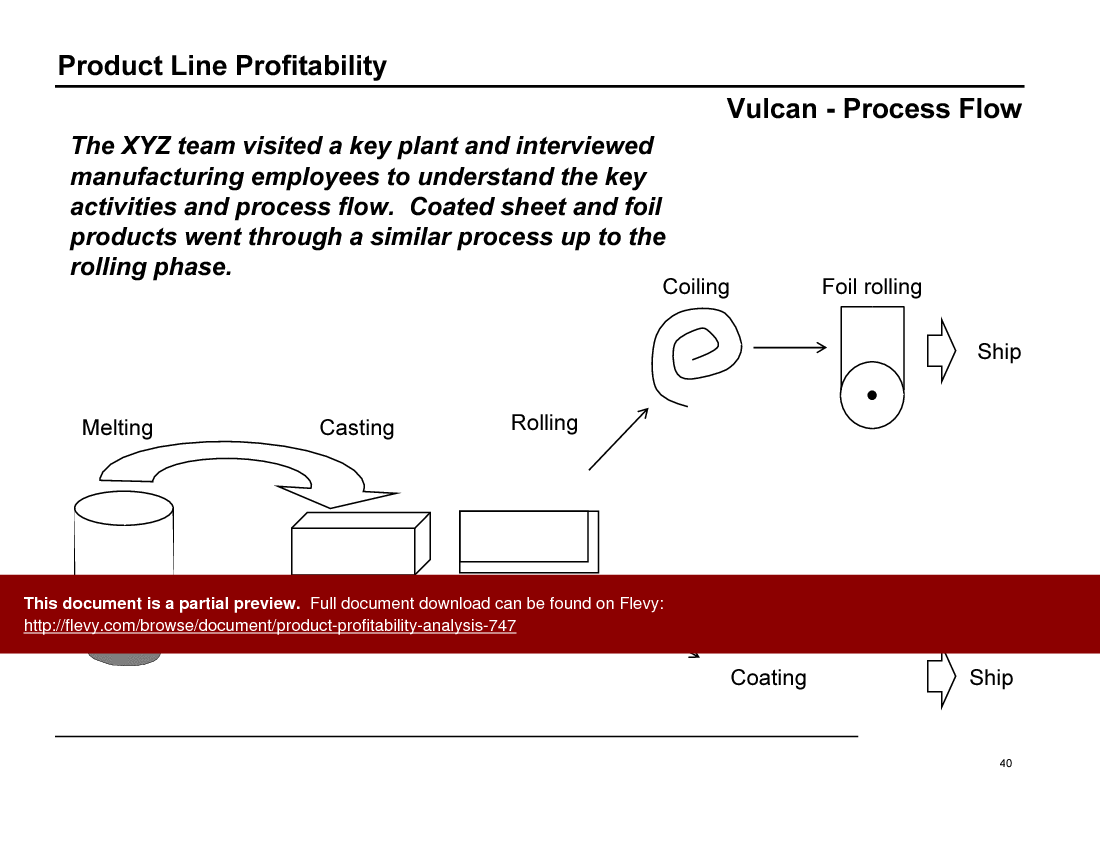Product Line Profitability Analysis (PowerPoint PPT Slide Deck)
PowerPoint (PPT) 62 Slides
PRODUCT STRATEGY PPT DESCRIPTION
This presentation is a training document on how to determine the true profitability of a product line. Unlike the traditional accounting, this approach assigns costs to products based on relevant cost drivers that can help management make meaningful decisions about product lines.
The deck has 60 slides, detailing step by step analysis through the use of business examples.
An ideal tool for business consultants, corporate managers, analysts and financial professionals.
This document provides a comprehensive breakdown of how to allocate both direct and indirect costs to product lines, ensuring a more accurate reflection of each product's profitability. It contrasts traditional accounting methods with the XYZ PLP approach, highlighting the limitations of conventional systems in capturing the true cost dynamics. The presentation includes detailed steps for implementing PLP, from understanding current financial systems to making strategic recommendations based on the analysis.
The analysis is supported by real-world examples, such as the case study of an aluminum manufacturer. This case study illustrates how PLP can identify the most and least profitable products, guiding strategic decisions on where to focus resources. The document also delves into the specifics of cost drivers, such as labor hours and storage requirements, providing a granular view of cost allocation.
Key success factors for PLP implementation are outlined, emphasizing the importance of mapping the value chain and tying costs to operations. The document also addresses common challenges, such as capturing all activities that drive costs and reconciling PLP results with overall business profits. These insights are crucial for ensuring the accuracy and effectiveness of the PLP analysis.
The presentation concludes with actionable recommendations for underperforming products, offering alternatives like cost reduction, price increases, and volume growth. These strategies are essential for optimizing product line profitability and making informed business decisions. This document is an invaluable resource for consultants, managers, and financial professionals seeking to enhance their understanding of product line profitability.
Got a question about the product? Email us at support@flevy.com or ask the author directly by using the "Ask the Author a Question" form. If you cannot view the preview above this document description, go here to view the large preview instead.
Source: Best Practices in Product Strategy PowerPoint Slides: Product Line Profitability Analysis PowerPoint (PPT) Presentation Slide Deck, Documents & Files
PRODUCT STRATEGY PPT SLIDES
This document is available as part of the following discounted bundle(s):
Save %!
Essential Consulting Knowledge Builder
This bundle contains 21 total documents. See all the documents to the right.















